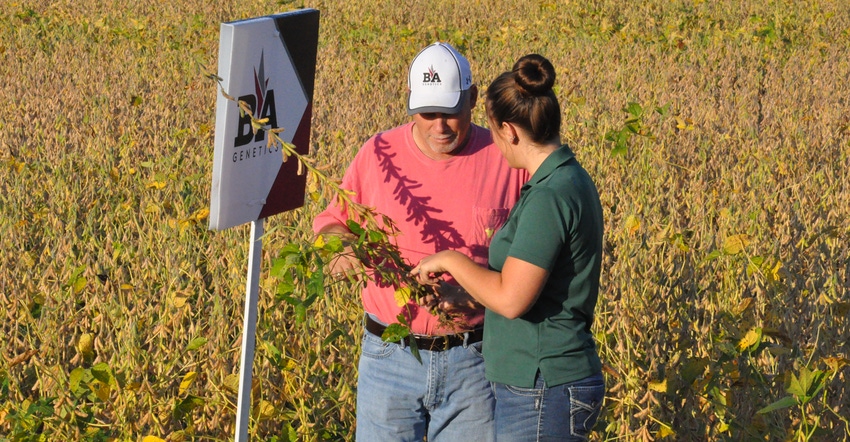December 20, 2017

By Shelby Riley
Over the last three years, Purdue University agronomy student Madison Boston has learned a lot about drones through an internship, and has persuaded her father to use the technology on their family farm, Boston Farms.
“Working for B&A Genetics, I have been around many farmers that have started to use drones,” Madison says. “The more that I am around the drones, the more I learn, and the more I see the benefits that drone technology can bring to the farm.”
Located in Sullivan, Ind., Boston Farms is a 1,000-acre corn and soybean operation. Boston believes that drones have a lot to offer when it comes to making decisions throughout the season, especially when it comes to treating diseases.
“I saw one drone that was equipped with thermal imaging, which allowed us to see if there were spots in the field that were potentially diseased,” she notes. “We can go to those specific spots based on the images rather than walking the entire field, and therefore make a diagnosis and treatment decision in a fraction of the time.”
While simply taking pictures and video of a field is beneficial for seeing what is going on in the field with the naked eye, Boston says it’s the additional equipment such as thermal imaging that truly holds the most benefit. Such tools allow the grower to pinpoint where pathogens and diseases are present in a field, as well as to perhaps estimate yield.
“Purchasing a drone for personal use could definitely be a good investment for someone who is farming on a large scale, but smaller farms may want to look at other options,” she says.
Boston believes the most cost-effective way to use drone technology is to work with a local cooperative or agronomist. A drone that is only equipped for photo and video is certainly affordable for most anyone, but one that has additional technology can become very costly.
On the Boston farm, the drone has made a difference — specifically in making estimates on green snap, which is a weather-related phenomenon that can have a negative impact on yields. Green snap causes cornstalks to snap during wind events.
“When trying new hybrids, we are worried about the effects of green snap on our yields,” Boston says. “Especially when we are doing test strips, it is a lot easier to fly the drone than walk the entire strip.”
When it comes to drones that are only equipped for photo and video, it’s also beneficial to check the images for spots in fields that are bare or potentially filled with weeds. Looking at the images allows the Bostons to go to the part of the field where there are weeds, identify them, and make spray decisions based on what weeds are in the field and where.
“Knowing that we can spot-treat a field helps us to save money on chemical and therefore make better decisions for our farm financially,” Boston says.
Overall, the Bostons have made a change on their farm for the better with the use of drones, and they believe the technology can make a difference for growers across the state.
Riley is a senior in ag communication at Purdue University.
You May Also Like




